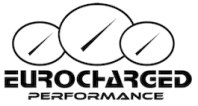Results 1 to 17 of 17
Threaded View
-
06-22-2015, 02:09 PM #1
The beginning of BMW's F80 M3 and F82 M4 S55 3.0 liter I6 dominance? N55 topped by S55 in International Engine of the Year awards despite judging inconsistency
BMW's inline-6 engines have traditionally dominated at the International Engine of the Year Awards. Since the inception of the International Engine of the Year Awards in 1999 BMW has won the 2.5 liter to 3.0 liter class 14 of 17 times. It's BMW's award to lose.

The N54 engine in particular had a streak of six straight wins from 2007 to 2012. The BMW N55 engine won the class last year after Porsche dethroned BMW in 2013 with their 2.7 liter naturally aspirated flat-6.
The awards in this category over the past few years make you scratch your head a bit. Why? Because the N55 was beaten by the Porsche motor only for the next year for the N55 to win. What changed? The judges?
Additionally, with the S55 winning the class this year why did it lose to the N55 last year? The N55 was better than the S55 in 2014 but in 2015 the S55 is better? The S55 received 174 points last year but this year received 246. The N55 last year received 254 points but this year 178. It is like they flip-flopped.
BimmerBoost last year commented this does not make sense:
"Additionally, BMW's brand new S55 3.0 liter turbocharged six-cylinder that is a newer and better designed motor than the N55 finishes behind the Porsche 2.7 liter flat-6 and the N55 as well. The older N55 is better than the brand new S55 motor in the M3/M4 with greater torque, greater power, better engine components, higher revs, and an overall superior design? That just does not make much sense.
The N55 takes the victory according to the scoring of the judging panel but the decision certainly does not appear logical. Regardless, BMW dominates this category with four motors in the top six. If BimmerBoost were to guess, the S55 will take this category next year but that only further supports what an odd decision the N55 is for 2014."
We were right, the motor did take the victory this year but it should have taken it last year as well. The S55 engine did not suddenly get better. Perhaps the judges got better at their job.
Regardless, with 700+ wheel horsepower out of the S55 already in the aftermarket not to mention its accolades in stock form BimmerBoost expects the S55 to dominate this category for the length of the F80 M3 and F82 M4 production unless someone brings something spectacular to the table. Perhaps Audi's next generation 3.0 TFSI V6 can do that.

The latest generation of BMW’s M3 bucks the trend of increasing capacity that its predecessors all followed. It is, in fact, the smallest engine to be used in the M3 since the original E30 era. But that didn’t stop the Bavarian 3-litre powerbase coming to the fore in this category to take top honours for 2015. And such a victory means BMW has taken the 2.5-litre to 3-litre grouping 10 times in the last 11 years and 14 times overall – a remarkable achievement on every level.
The S55 B30 unit fitted to the new M3 and M4 marks a return to an in-line six-cylinder configuration for M – only this time with the addition of two IHI twin-scroll turbos with variable vane geometry. The blowers operate at a conservative 18.9psi, but help deliver 431ps and 550Nm. But perhaps what impressed judges more was the six-cylinder’s torque spread, with that peak figure being sustained from 1,850rpm through to 5,500rpm.
The longitudinally mounted, closed-deck, aluminium block runs at a compression ratio of 10.2:1, and has a high-precision direct injection fuel system. This works alongside a double-VANOS setup to control intake valve lift, further helping to boost output power.
Performance has always been the M Division’s mantra, and the new 3-litre unit continues to sing to that tune. For spirited driving on road and track, the S55 B30 uses a magnesium oil sump to limit the flow of oil under lateral loading. To counter longitudinal movement of the oil under full acceleration and deceleration, the engine also uses an oil extraction pump and return system to ensure a constant flow of oil at all times.
In addition to such performance, the M3/M4 motor also delivers on efficiency. It comes equipped with stop/start, brake energy regeneration, a map-controlled oil pump and on-demand ancillaries, meaning that it consumes 8.3 l/100km (34mpg) and emits 194g/km C02.
Such a combination won over many judges. French freelancer Yves Maroselli enthused, “This is the best turbocharged six-cylinder engine on the market!”












 Quote
Quote









Welcome aqiii,...
NOOOOB: aqiii